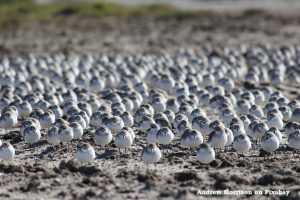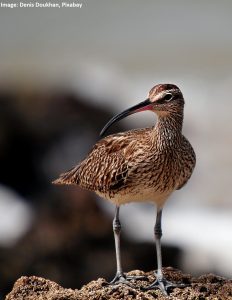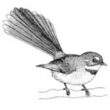In keeping with celebrations of Mandurah’s Wetland Weekender Festival for World Migratory Bird Day 2022, here are Ways to Nature’s top ten migratory shorebird facts:
10. Australia has around 37 international shorebird species visiting our wetlands and waterways.
9. 22 of them have been recorded at the Binjareb region’s Peel-Yalgourp Wetland System, Ramsar Site 482.
8. Ramsar is a city in Iran where the first International Convention for the Protection of Wetlands was signed in 1971. The Ramsar Convention oversees the world’s largest network of protected areas: there are over 2,400 Ramsar sites around the world, protecting over 2.5 million square kilometres of shorebird and waterbird habitat!
7. The route that migratory shorebirds use to travel to Australia is called the East Asian-Australasian Flyway. Depending on where the birds leave from in the northern hemisphere, this journey is between 9,000-13,000km one way! That’s a round trip of at least 18,000km – equivalent to walking across Australia from Perth to Sydney four and a half times!
6. The Eastern Curlew is Australia’s largest migratory shorebird. Its large, downward curving bill is about the same length as its body, enabling it to extract marine worms and crabs from deep sand that other shorebirds cannot reach.
5. Some shorebirds, such as stints and sandpipers, are tactile feeders, and find their prey by feeling with their bill. They have specialised cells in their bill tip that can detect minute vibrations of their prey in mud and sand. This ability enables them to feed along exposed mudflats at low tides even during night-time.
4. Migratory birds have amazing physiological adaptations to enable them to make such extraordinary journeys across the globe. One of the coolest is that they can ‘shut-down’ parts of their brain for a rest while they continue to fly.
3. Researchers radio-tracked a Bar-tailed Godwit and discovered that it flew non-stop over 12,000km in nine days!
2. To prepare for its long migratory flight, the tiny (30grams) Red-necked Stint, Australia’s smallest migratory shorebird, feeds intensively and almost doubles its body weight. While flying, it then diverts energy metabolism to support the heart and the flight muscles whilst allowing other parts of the body not involved in flight – like the leg muscles and digestive system – to atrophy.
1. After hatching, many shorebird species are left by their parents to fend for themselves and learn to fly. Their parents leave on their migratory journey while their chicks are still feeding and developing their flight feathers. The mystery of bird migration is that the young birds innately know that they must make that same migratory flight and set off along the same flyway for the very first time -without their parents.


